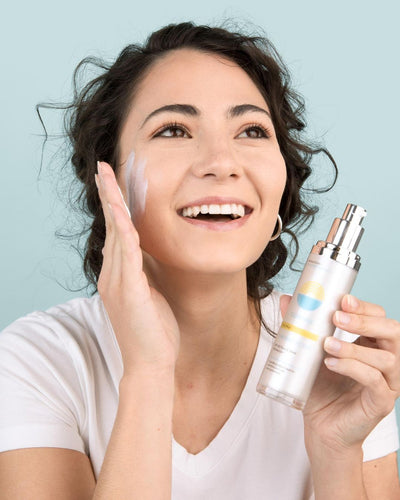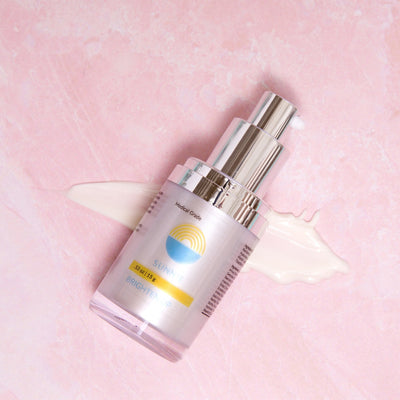Medical grade chemical peels are common in the professional skincare industry. If you are serious about taking care of your face, this is a treatment you should try to incorporate as a regular step in your skincare regimen.
Overview
Chemical peels and medical grade facials are excellent at addressing skincare concerns like dullness, elasticity concerns, and texture issues. The effects of these peels last much longer than a spa facial, which only lasts a couple of days.
Chemical peels work far beneath the surface of your skin to retain it. This is why you must add it into your routine instead of a one-and-done approach.
With some information combing, we have found the answers to all of your questions about chemical peels, including what they are, how they differ from other products and services, and the key benefits of a medical grade chemical peel.
What is a Medical Grade Chemical Peel?
Medical grade peels contain larger doses of active ingredients to help address your skin concerns. A medical grade chemical peel works to penetrate far below the surface levels of the epidermis to encourage the skin to regenerate more healthily. These results last much longer than other types of facials and non-medical grade chemical peels.
What is the Difference Between a Moisturizer and a Chemical Peel?
A moisturizer protects the skin. Adding extra moisture while also keeping the natural moisture you have locked into your skin throughout the day or night.
Chemical peels focus on removing the top layer of skin so that the skin can regenerate smoother. These peels range from light to heavy in their chemical composition, but they all have the same general goal.
How Often Should You Use a Chemical Peel?
It is best to speak with a skincare professional about how often you can have a chemical peel. It does vary depending on the skincare concern you have, your skin tone, and the concentration of the ingredients in the type of peel you need.
The regulations vary depending on the type of chemical peel you want and the skin concern you need to address. Some peels should be done only once. Others require 2-4 trips to the office for treatments. Some medical grade chemical peels get repeated every so often to sustain results.
What does Medical Grade Chemical Peel Replace?
Medical grade chemical peels are a great addition to your skincare routine. They do not necessarily replace any other step of your skincare routine. However, you may find that your skin needs chemical peels versus other facial treatments the most, so you can use chemical peels instead of other spa facials if that is what your skin needs.
How does It Differ from a Standard Chemical Peel?
Chemical peels can vary based on how severe the effects on your skin will be. They get broken up into three levels, with level 1 being the least aggressive. Each peel addresses a different skincare concern, so you must have a consultation with a professional to see which is best for you.
You can have a standard peel, or a level 1, every 2-5 weeks. Each level is still considered a medical grade chemical peel, but a level 1 chemical peel is much more gentle on the skin than a level 3 chemical peel. Level 1 peels help most during the day with little to no downtime.
A medical grade chemical peel is considered a level 3 chemical peel. Usually, these procedures do not need to be repeated, since they are so aggressive.
What are the Key Benefits of Medical Grade Chemical Peels?
Medical grade chemical peels are great for various skin issues. The severity of your problem determines the level of the chemical peel you need. For medical grade peels like level 2 or level 3 peels, you should consult a dermatologist for the best advice on the type of service to purchase.
Here are a few key benefits of medical grade chemical peels:
- Prolonged pore tightness
- Lifting effect on the skin
- Fewer fine lines and wrinkles
- Improved skin brightness
- Long-lasting results
There are numerous benefits to certain types of ingredients. If you are looking for a specific result or trying to target a particular area, you should get a consultation to determine the right treatment plan.
What do Different Skin Types Need to Consider Before a Chemical Peel?
Medical grade chemical peels contain about 70% concentration of glycolic acid compared with spa facial peels that contain about 30%. However, not all chemical peels are created equal. Each peel contains ingredients specific to the skin issue you are tackling.
Depending on your skin texture, you might need additional ingredients that will help improve skin conditions like rosacea, eczema, age spots, dead skin cells, or blemishes and breakouts. Other issues, like dry skin, flaking, and the overproduction of oil, can be addressed with a medical grade chemical peel.
If you know you have these issues or overall sensitive skin, communicate with your skin care professional at your dermatology appointment to ensure desired results.
Popular Types of Medical Grade Chemical Peels
A few types of medical grade chemical peels are common in most skincare practices.
Keep in mind that many treatments are aggressive, so you can expect a slight swelling and redness post-peel. Your dermatologist or esthetician should give you advice on aftercare specific to the type of service and a list of potential side effects before the treatment.
Keep reading for more information on active ingredients perfect for various skin issues.
Best Medical Grade Brightening Chemical Peel
Brightening chemical peels contain an active ingredient called trichloroacetic acid, or TCA. TCA helps treat discoloration and hyperpigmentation.
This peel encourages the regeneration of your skin. It is also suitable for skin with sun damage.
Best Medical Grade Chemical Peel for Melasma
Melasma is a skin condition brought on by intense exposure to the sun, ultraviolet light, or a hormonal imbalance. You can treat melasma with a medical grade chemical peel that contains salicylic acid.
Most estheticians recommend a peel with at least 20% salicylic acid to help treat this condition.
Best Medical Grade Chemical Peel for Wrinkles
Retinol is one of the critical ingredients for fighting wrinkles. Retinol rejuvenates, hydrates, and refreshes skin for a more youthful look.
Retinol helps fight wrinkles by removing the damaged skin, which allows the lower layers of skin to regrow more healthily.
Best Medical Grade Chemical Peel for Fine Lines
Retinol is a good peel for fighting fine lines in the way it helps fight wrinkles. You need two to four deep chemical peels of this type to see results.
It is best to attack this issue early because chemical peels cannot reverse deep lines or wrinkles. If you start attacking fine lines, it will be beneficial in the long run!
Best Medical Grade Chemical Peel for Puffiness
Frequently, puffiness is more a result of water retention and thick skin due to aging.
This is why chemical peels treat puffiness. Chemical peels work to rejuvenate skin and help smooth out the affected area.
Glycolic acid and retinol are great ingredients that help fight puffiness. They also give a brighter, lighter look too puffy areas.
Best Medical Grade Chemical Peel for Bags Under Eyes
Bags under your eyes can be from a lack of rest, a sign of aging, excess fluid in the body, or general skin discoloration. The best type of medical grade chemical peel for bags under the eyes is a peel containing retinol and glycolic acid. These ingredients work to smooth and regenerate skin for a more youthful and bright appearance.
Where can You Find Medical Grade Chemical Peels?
Medical grade chemical peels often get done in a skincare-specific spa, a dermatologist's office, or a licensed esthetician's office. There are at-home products on the market that tout their product ingredients as being similar to professionals. It is best to check with your dermatologist before using these.
How Much Does a Medical Grade Chemical Peel Cost?
Depending on the type of spa you book your chemical peel with, the peel can cost anywhere from $175 to $500. Your specific skin plan will determine how many treatments you need.
At-home medical grade chemical peel products can cost anywhere from $30-$100. These products often contain Vitamin C, retinol, collagen, SPF, lactic acid, hyaluronic acid, alpha hydroxy acid, etc. However, these products should be used with caution and only under the direction of your esthetician or dermatologist.
These ingredients can be daunting to consumers who are not fully aware of their power and ability. Still, with a bit of consultation from the professionals, you might be able to use the at-home products just fine! This will help save you time and money on your medical grade skincare needs.
Conclusion
The medical grade skin care, specifically a medical grade chemical peel, is beneficial to your skincare routine. When acid peels get used in conjunction with plastic surgery and botox, you can expect excellent results!
These chemical peels keep you looking fresh and keep your skin as healthy as possible. Do not be afraid to branch out and try a peel today!
For at-home medical grade skincare, look at the best skincare Sunnie has to offer and see what treatment plan is best for you!




